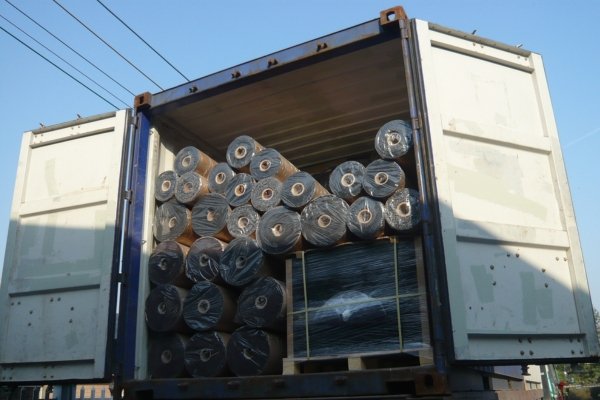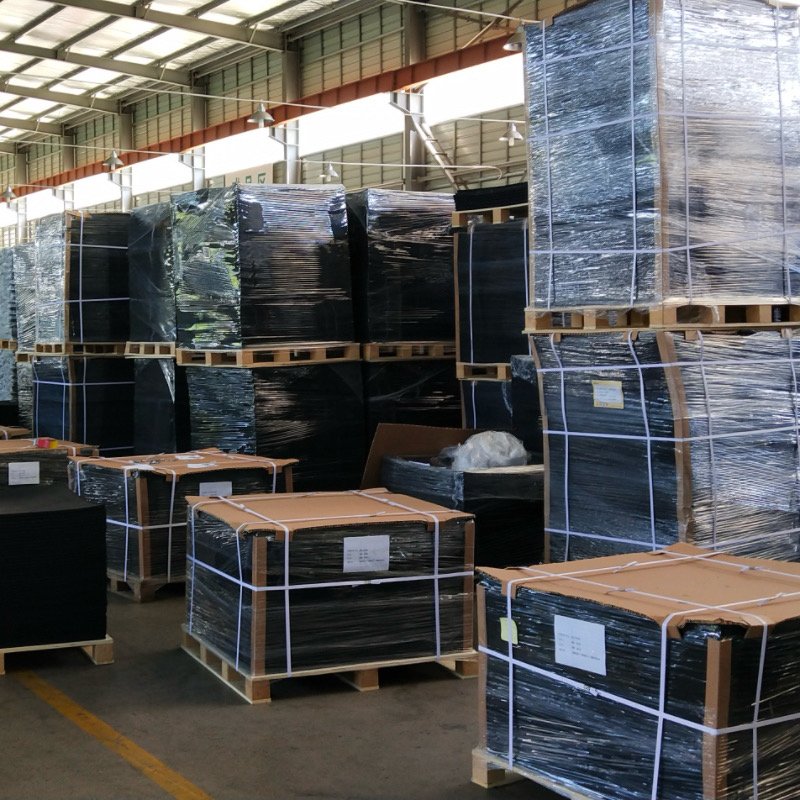# Which Type Ships Cheaper: Rubber Rolls or Tiles?
Shipping mistakes cost money. For importers, even a small difference in CBM or pallet efficiency can impact your entire margin.
**Rubber rolls generally ship with better volume efficiency, while tiles are easier to palletize but increase container usage due to thicker specs.**
When choosing between [rubber tiles](https://lanhefloor.com/gym-rubber-tile/) and [rubber rolls](https://lanhefloor.com/gym-rubber-roll/), importers must think beyond product price. Freight, container load, and packaging method matter—especially when shipping internationally. Here’s what I explain to clients who import flooring from our [factory in China](https://www.lanhefloor.com) to North America, Europe, and the Middle East.
## What’s the Packaging Efficiency Like?
Every centimeter of space counts when importing bulk goods.
**Rubber rolls maximize linear meters per pallet, while tiles are more space-consuming per square meter due to their thickness.**

### Rubber Rolls: Long, Light, and Layered
[Rubber rolls](https://lanhefloor.com/gym-rubber-roll/) are packed rolled-up and stacked either vertically or horizontally. With widths of 1.0m–1.25m and lengths of 10m–15m, they can cover large areas with fewer units. That means:
– Fewer pallets
– Fewer handling steps
– Better ratio of usable surface vs shipping volume
For example, 10 pallets of rolls can cover 3x more surface area than 10 pallets of 25mm tiles.
### Rubber Tiles: Bulkier but Stable
[Rubber tiles](https://lanhefloor.com/gym-rubber-tile/) are typically 20–50mm thick and packed flat on fumigated pallets. Even with tightly stacked layers and paperboard separators, they take up more volume per m².
[Interlocking tiles](https://lanhefloor.com/puzzle-rubber-tile/) and [composite tiles](https://lanhefloor.com/composite-gym-rubber-tile/) require protection for the edges and surface, which adds further to the packaging volume. For example, 500–800kg per pallet might only cover 20–30m².
| Metric | Rubber Rolls | Rubber Tiles |
|—————————|————————————-|————————————–|
| Packing Style | Rolled, wrapped in film | Flat, stacked with paper sheets |
| Pallet Weight Range | ~300–500kg | ~500–800kg |
| Volume per m² | Lower | Higher |
| Pallet Count per 20GP | Fewer pallets needed | More pallets required |
| Extra Materials Needed | Minimal | Edge protection, inner layers |
## What About Shipping Cost and CBM?
Shipping is usually calculated based on cubic meters or gross weight—whichever is higher.
**Rubber rolls take less CBM per m², making them more cost-effective for large surface coverage. Tiles are heavier and bulkier, increasing overall freight cost.**

### Freight by CBM
Let’s say you are booking a 20-foot container. Here’s a rough comparison for a 25mm product:
– **Rubber Rolls**: About 800–1,000m² can fit per container.
– **Rubber Tiles**: Only 400–500m², depending on thickness and pallet height limits.
So with [rubber rolls](https://lanhefloor.com/gym-rubber-roll/), you get nearly double the coverage per container. That directly reduces landed cost per square meter.
### Gross Weight Consideration
Tiles are denser. For heavy-duty zones, like [tiny granule tiles](https://lanhefloor.com/tiny-granule-rubber-tile/), they often range from 900–1,000 kg/m³. That adds weight and sometimes triggers heavy load surcharges, especially in countries like Canada, UAE, or Japan where inland logistics have strict limits.
| Factor | Rubber Rolls | Rubber Tiles |
|—————————-|————————————–|————————————–|
| CBM Efficiency | High | Moderate to low |
| Average Freight Cost/m² | Lower | Higher |
| Container Utilization Rate | 80–90% of usable volume | 60–70% (due to thickness gaps) |
| Weight-Based Charges | Lower risk unless ultra thick | May exceed free weight threshold |
## Which Option Should Importers Choose?
There’s no one-size-fits-all. But cost-conscious importers need to balance shipping math with installation site needs.
**Choose rubber rolls when you want maximum surface coverage per container. Choose tiles when product specs require shock absorption or edge-locking.**
### Importer Strategy Suggestions
#### ✅ When to Choose Rubber Rolls
– Shipping to distant or high-freight zones (Australia, Middle East)
– Large open spaces: yoga, cardio, walkways
– Tight container loading budget
#### ✅ When to Choose Rubber Tiles
– Free weight zones that need >25mm thickness
– Modular layout projects with multi-phase delivery
– High-end clients who demand specific aesthetics like [composite gym tiles](https://lanhefloor.com/composite-gym-rubber-tile/)
You can also combine products—using [tiles for heavy zones](https://lanhefloor.com/gym-rubber-tile/) and [rolls for light-use areas](https://lanhefloor.com/gym-rubber-roll/)—to optimize shipping and cost.
## Conclusion
For importers, rubber rolls offer better packaging efficiency and shipping cost per m². But tiles are the right choice when your client or project specs demand thickness and durability.
—
📦 Want to explore real project configurations? Check out our [installation cases](https://lanhefloor.com/projects/)
🌍 See more flooring for outdoor use: [Outdoor Rubber Floor](https://lanhefloor.com/outdoor-rubber-floor/)
🎨 Or shop high-quality [EPDM Granules](https://www.lanhefloor.com/epdm-granules/)
Visit our homepage for full catalog & support: [www.lanhefloor.com](https://www.lanhefloor.com)
